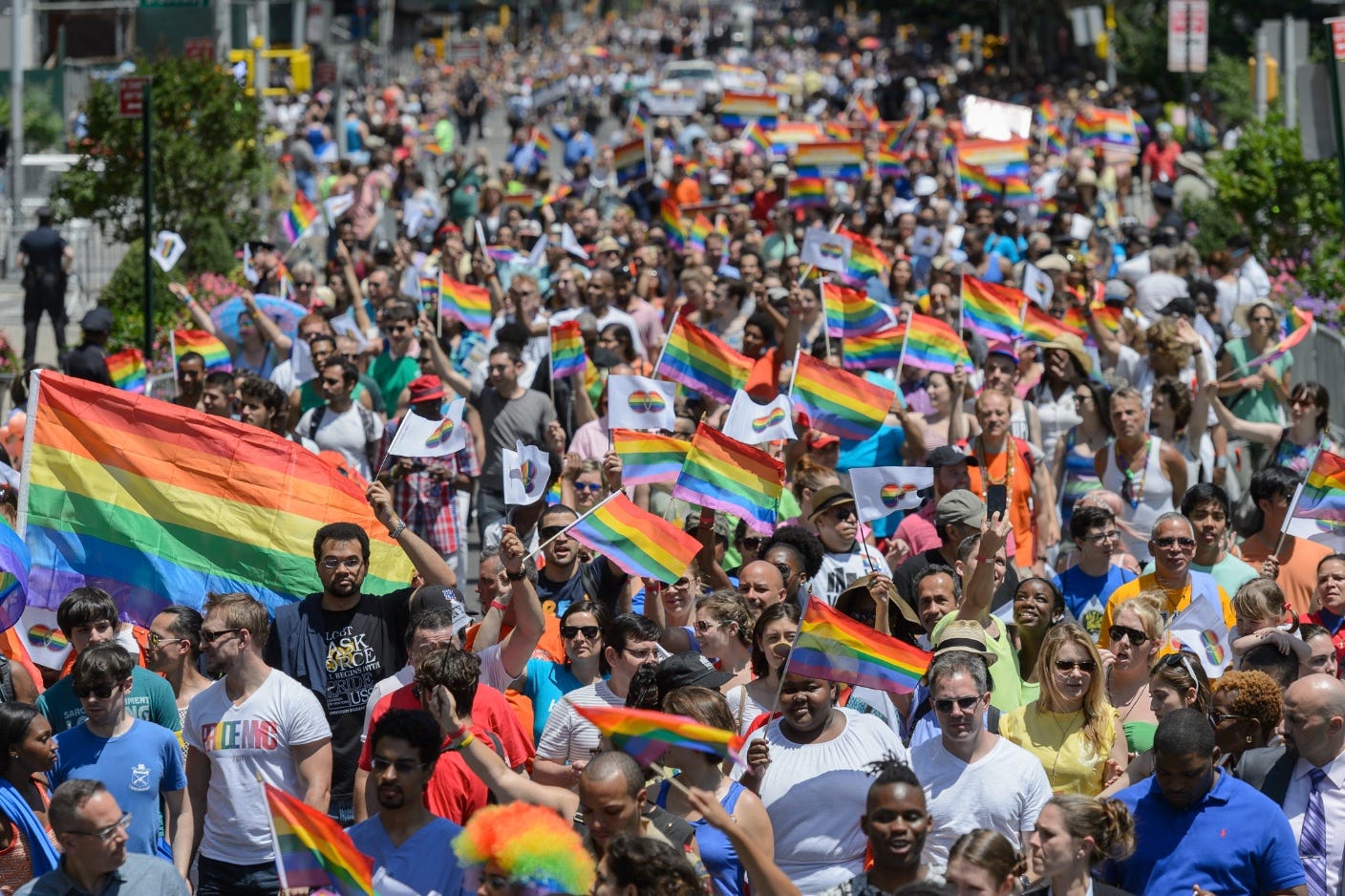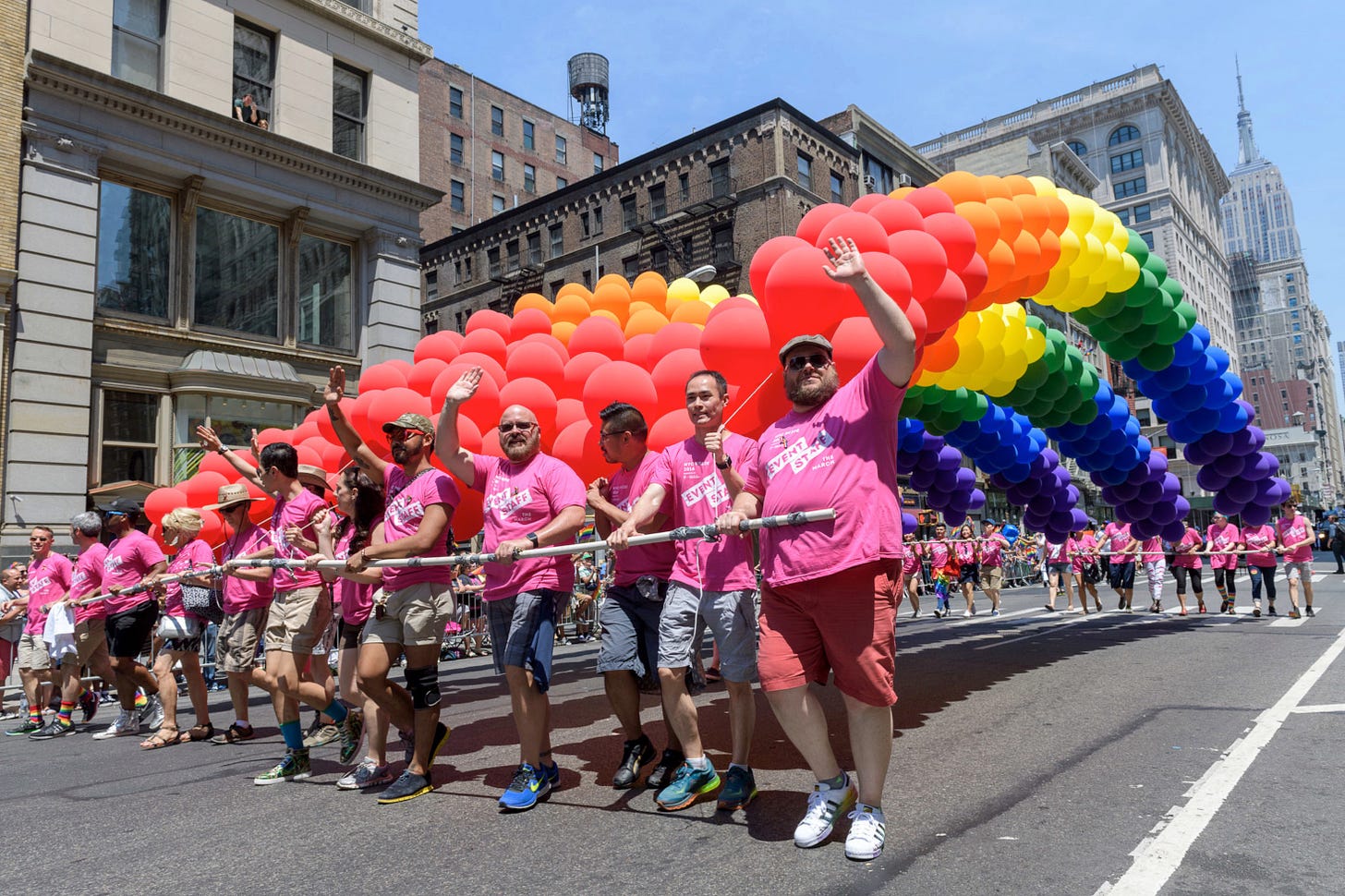Celebrating Pride in an Era of Resistance: Honoring History, Embracing Visibility, Defending Dignity
What began as a protest, evolved to a joyful celebration. Let’s not let Trump steal our Pride, joy, or celebration. Everyone deserves recognition and respect.
Celebrating Pride in an Era of Resistance: Honoring History, Embracing Visibility, Defending Dignity
The Meaning of Pride
Pride Month is more than parades, rainbow flags, and festive celebrations—it is a time to honor the struggle, resilience, inherent dignity, and achievements of the LGBTQ+ community. It is rooted in a history of resistance, born from a moment when LGBTQ+ individuals, tired of humiliation and brutality, stood up and said, “No more.” That moment was the Stonewall Riots of June 1969, and it sparked a movement that has grown in courage, scope, and impact ever since.
But in 2025, Pride Month unfolds in a time of renewed challenges. The Trump administration, now in its second term, has escalated its attacks on LGBTQ+ rights, culture, and visibility. Rather than offering recognition or protection, it has taken aim at the very existence of LGBTQ+ people in public life. And yet, as Cathy Renna of the National LGBTQ Task Force so powerfully said, these attacks only energize us. As we celebrate Pride Month, we must also recognize the urgency of resistance, solidarity, and action.
Stonewall: The Spark of a Movement
On the night of June 28, 1969, the police raided the Stonewall Inn, a gay bar in New York City’s Greenwich Village. While raids on LGBTQ+ establishments were common at the time, something different happened that night: people fought back. Drag queens, transgender women of color, gay men, lesbians, and allies refused to accept the dehumanization and violence any longer.
The riots that followed over several days were spontaneous but deeply meaningful. They revealed the systemic oppression faced by LGBTQ+ people and ignited a fire that would become the modern gay rights movement. In the words of many who were there, the riots were not just about one bar or one raid—they were about years of being pushed aside, punished, and erased.
Stonewall became a symbol, and symbols become movements when they are remembered and honored.
From Protest to Pride: The First Marches
One year later, on June 28, 1970, the first Pride marches took place in New York City, Los Angeles, and Chicago. The New York event was called “Christopher Street Liberation Day,” in honor of the street where the Stonewall Inn stood. These early marches were not yet the joyful celebrations we often see today. They were bold, courageous acts of visibility and defiance, held in a society that still considered LGBTQ+ people criminal, immoral, or invisible.
But that visibility changed the culture. It created space for organizing, for community, and for demands for equality. The phrase “we’re here, we’re queer, get used to it” was not just a slogan—it was a declaration of existence in a world that wanted LGBTQ+ people to hide or disappear.
Pride Evolves: Celebration and Resistance
Pride has evolved over the decades. From street protests, it has grown into a month-long celebration with parades, art, education, and activism. In 1999, President Bill Clinton officially recognized June as Gay and Lesbian Pride Month, and subsequent Democratic administrations have expanded that recognition to be inclusive of the full LGBTQ+ spectrum. Government buildings raised rainbow flags, and LGBTQ+ Americans were honored for their contributions to society.
Still, even as cultural visibility improved, backlash never disappeared. Each step forward has been met with resistance from those who fear equality or misunderstand what LGBTQ+ people ask for: simply to live, love, and be treated with dignity.
Trump’s Pride Month: A Month of Hostility
Nowhere is that backlash more aggressive than in the second Trump administration’s approach to Pride Month. Rather than ignoring it, the administration has taken to actively undermining it.
On the very cusp of June 2025, Trump issued an executive order eliminating all Diversity, Equity, and Inclusion (DEI) programs in the federal government. DEI—the foundational concept that institutions should reflect and support the full spectrum of American society—is now treated as an enemy of the state.
In the opening days of Pride Month, the administration has:
Renamed a Navy ship previously honoring Harvey Milk, a slain gay rights hero.
Closed Dupont Circle Park, a symbolic and literal gathering space for the LGBTQ+ community, ahead of WorldPride celebrations in Washington, D.C.
Solicited tips via the FBI on medical providers offering gender-affirming care for minors, criminalizing the medical consensus on care for transgender youth.
Threatened funding to California after a transgender teen won a high school track championship event, weaponizing federal resources against states that support LGBTQ+ inclusion.
Redefined June as “Title IX Month”, reversing inclusive definitions of sex and gender to exclude transgender people from protections in education and athletics.
Perhaps most symbolically damning is the president’s refusal to even acknowledge Pride Month, with his press secretary affirming there are “no plans” to do so. This is not neutrality. This is targeted erasure.
The Consequences of Erasure and Bullying
These actions send a chilling message: that LGBTQ+ people are not only unwelcome but seen as threats to national identity. By policing visibility, cutting off support, and attempting to criminalize care, the administration hopes to intimidate people back into silence and shame.
But history shows that erasure breeds resistance.
Just as the Stonewall riots rose out of repeated police harassment, so too will today’s LGBTQ+ movement and its allies rise in response to these coordinated attacks. These policies do not merely harm transgender youth, closeted teens, or queer elders—they tear at the fabric of our shared humanity.
As Dr. Martin Luther King Jr. reminded us, “Injustice anywhere is a threat to justice everywhere.”
When the government targets a group, we are all called to stand up. Silence is complicity.
Pride as Protest, Pride as Promise
We must reclaim the dual spirit of Pride: as celebration and as protest. Pride is about joy, but it is also about resistance. It is about love and freedom, but also survival, visibility, and respect for all.
As WorldPride takes place in Washington this year, even fenced parks and hostile administrations cannot keep the spirit of Stonewall from spreading. If anything, the adversity reminds us why Pride matters more than ever.
Let us march not just in colorful celebration, but in determined defiance. Let our rainbow flags be not just signs of identity, but shields of solidarity. Let our songs and dances, our speeches and vigils, be both honoring and empowering.
Conclusion: A Call to Action
In this moment, we must rise together. We must defend our LGBTQ+ neighbors, friends, family members, and ourselves against the machinery of cruelty disguised as policy. We must show that compassion, inclusion, and truth are stronger than fear.
Celebrate Pride. But also vote, organize, donate, and speak up. Push back against policies that strip people of rights. Support youth facing rejection. Uplift queer stories and histories. Hold our leaders accountable, especially those who believe denying dignity is a political strategy.
Pride began with bricks thrown in defiance and marches walked in courage. Let us honor that spirit, not just in June, but every day.
We are stronger together. We are more beautiful when we see and celebrate each other. And we are never going back.
If Thinking Deeply touches you. If it motivates you to take action. If you find my writing helpful. Please share it with others. Ask them to subscribe to Thinking Deeply. Remember, all subscriptions to Thinking Deeply are free.
If you have thoughts worthy of sharing on my articles, please add them as comments.





